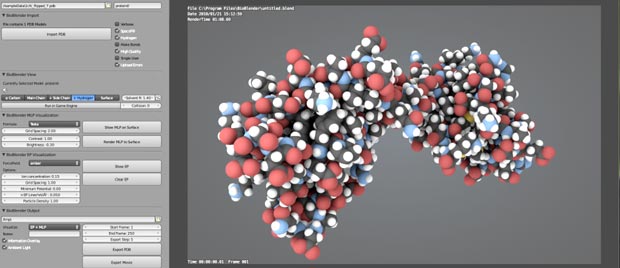BioBlender is a software package built on the open-source 3D modeling software Blender. BioBlender version 1.0 for Windows and Linux was released on July 12, 2013. The first beta version of BioBlender (v 0.1) was presented in September 2010.

BioBlender
BioBlender is the result of a collaboration, driven by the SciVis group at the Institute of Clinical Physiology (CNR) in Pisa, Italy, between scientists of different disciplines (biology, chemistry, physics, computer sciences) and artists, using Blender in a rigorous but at the same time creative way.
With BioBlender users can handle proteins in the 3D space, displaying their surface in a photorealistic way, and elaborate protein movements on the basis of known conformations. Scientists all over the world study proteins at atomic level and deposit information in the public repository Protein Data Bank, where each molecule is described as the list of its atoms and their 3D coordinates.
BioBlender can be used for:
- import and visualize Protein Data Bank (PDB) files (The PDB file format is a textual file format describing the three dimensional structures of molecules held in the Protein Data Bank)
- simulate molecular dynamics and optimize protein motion
- visualize complex protein surface properties (e.g. MLP and EP surface properties)
A BioBlender tutorial was published by Raluca Andrei, Mike Chen Pan and Monica Zoppè, in the BlenderArt magazine N.31 in December 2010.
